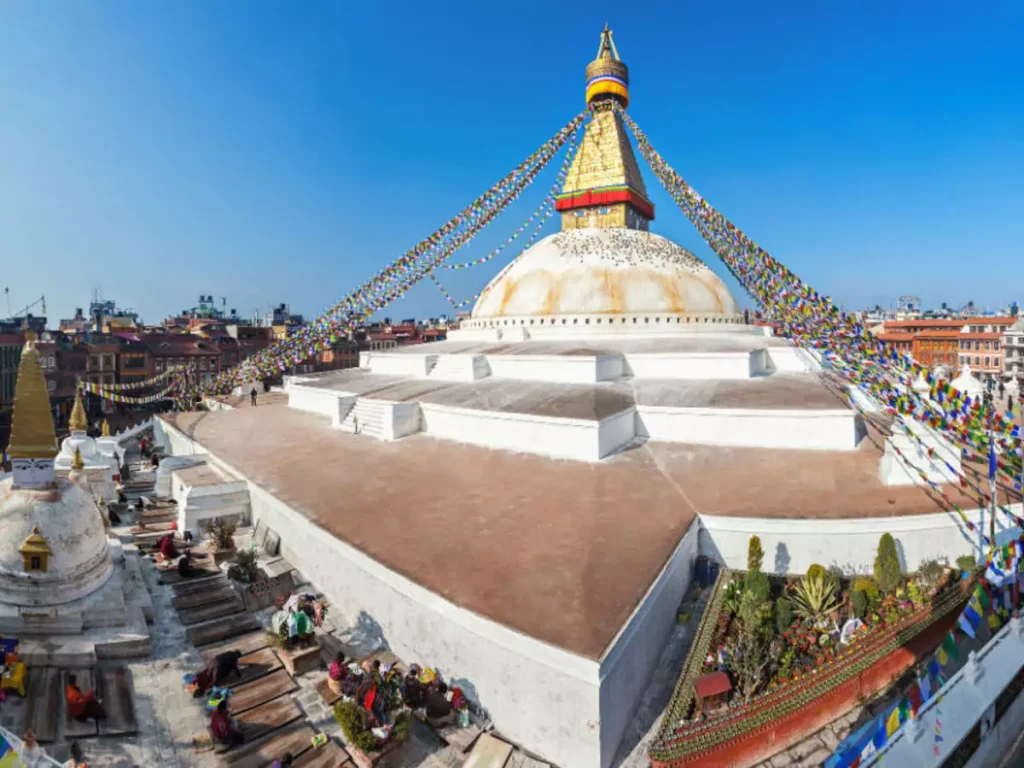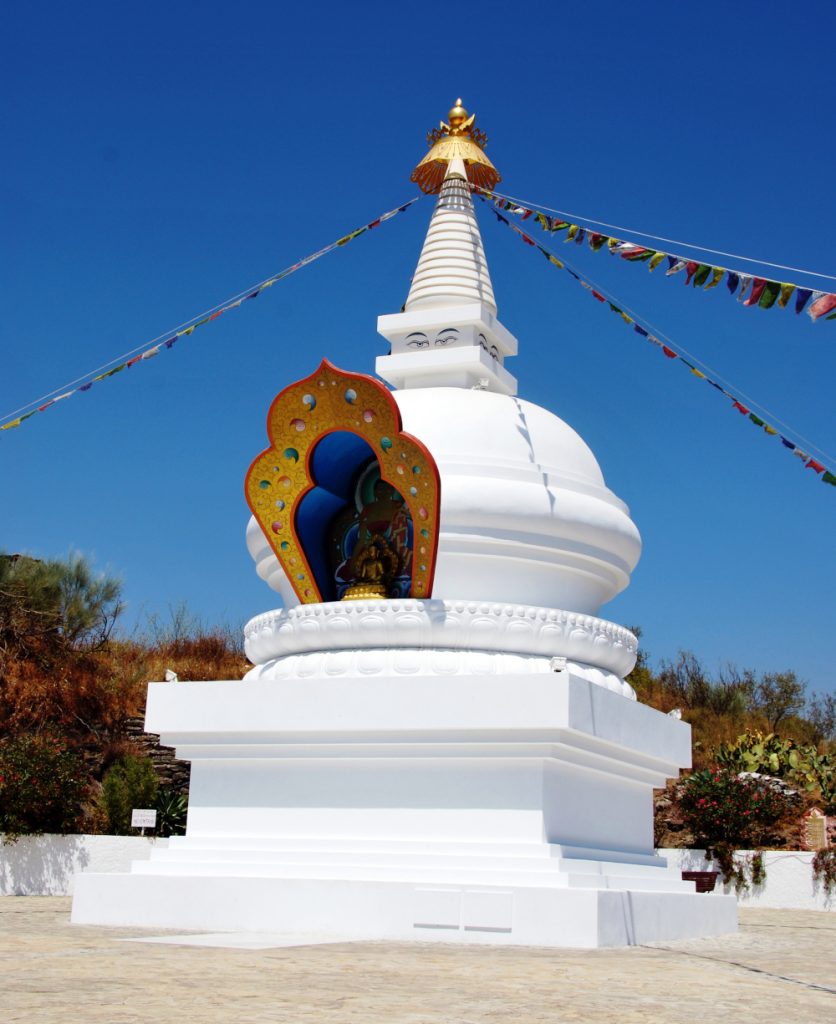STUPA


About stupas
Stupa building is an ancient Buddhist tradition in Asia, and is now found in many European countries, including Austria, Germany, Poland, Switzerland, Spain, Greece and Hungary. The stupa attracts visitors not only because of its unique architectural beauty: its vitality penetrates and soothes man and landscape; it brings harmony and development, creates wealth and protects the environment. The stupa can be visited by anyone, regardless of worldview or religious affiliation, and experience its powerful effects; the stupas remind us of the possibility of personal development, through which we can unfold our own inner perfection, all the wonderful qualities and capacities we have within us, to benefit others and ourselves.
The stupa (Tibetan: stupas) is a symbol of the fully unfolded experiential consciousness inherent in all beings and the perfect harmony of the universe. For Buddhist practitioners, it symbolises that the perfect, true nature of consciousness – fearlessness, spontaneous joy and active compassion – that the enlightened teacher Buddha recognised two and a half millennia ago, is inherent in everyone and is available to all. It creates the peace and love that almost all religions hold as their highest value. Its outward form represents the Buddha sitting in meditation posture, representing the steps towards enlightenment from the base to the top – the Buddhist path. Inside are relics, Buddhist texts and clay or plaster statues.
Stupas affect us in countless ways. Just seeing one can bring about a positive change in us: it activates the capacities of our consciousness, the enlightened qualities within us.
When we get close to the stupa, we can simply enjoy its presence, meditate next to it or walk around it in a clockwise direction, as is the tradition.
Even if you come to a stupa as a visitor with no particular purpose, you can experience an unexpected moment of pure awareness. Stupas show us the harmony and perfection of all universal values and inspire us to evolve and develop the limitless capacities of consciousness.
“A stupa is for the benefit of the whole world. The wind brings blessings to all beings and frees them from a lot of negativity. One who erects a stupa in honour of Buddhist teachings and Buddha will surely attain enlightenment. It is a great merit to take part in its construction – one who does so plants the seeds of wisdom in his consciousness.” – Lopön Tsechu Rinpoche
Enlightenment Stupa of Becske
According to Buddhist teachings, there are eight main stupa forms. Each one depicts an important event in the life of Buddha. The nine-meter-high Becske Stupa symbolizes the Buddha’s enlightenment at the age of 35. Originally, a stupa was to be built in Hamburg at this time, but in the summer of 2008, unexpected news arrived from Germany, according to which the municipality ultimately did not allow the construction. This is how Hungary received this gift.
Lama Ole Nydahl’s request to build the Enlightenment Stupa in Becske was also supported by the renowned Nepalese Buddhist teacher, Sherab Gyaltsen Rinpoche. The Enlightenment Stupa was built in 2008 over a period of 9 weeks on Csigahegy, located near the village of Becske. The creation and inauguration of the stupa was led by Sherab Gyaltsen Rinpoche, since a stupa can only be built under the guidance of a Buddhist master with sufficient experience and knowledge.
As the head of several Nepalese retreat centers and monasteries, Maniwa Lama Serab Gyaltsen Rinpoche built thirty stupas in Nepal and France. In Hungary, he gave several large-scale initiations in Budapest and Vienna.
The fact that the stupa could be built in such a short time is due to our friends from Hamburg, Hungary and other Buddhist practitioners, whose great work resulted in the inauguration of the stupa by Serab Gyaltsen Rinpoche and Lama Ole Nydahl in September 2008, in the presence of thousands of Buddhist practitioners.

